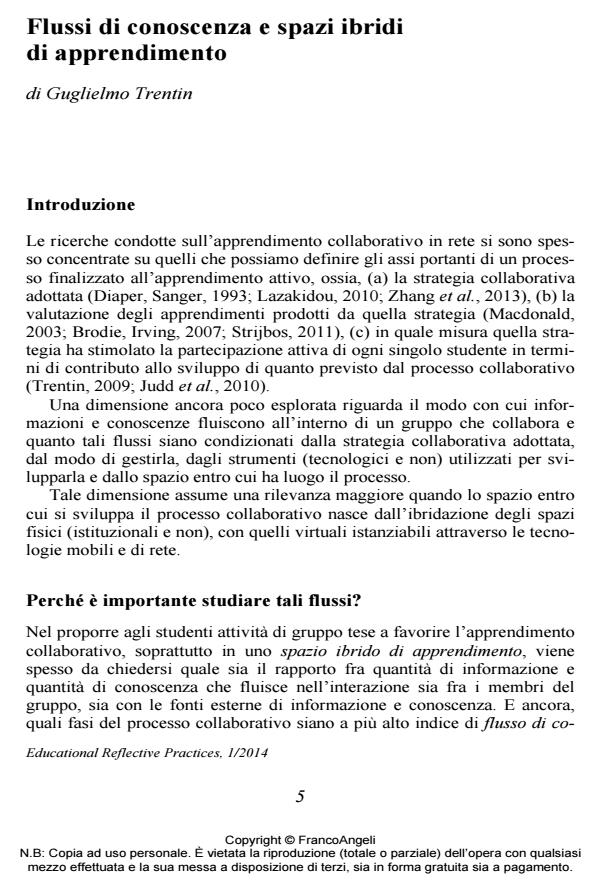Flussi di conoscenza e spazi ibridi di apprendimento
Titolo Rivista EDUCATIONAL REFLECTIVE PRACTICES
Autori/Curatori Guglielmo Trentin
Anno di pubblicazione 2015 Fascicolo 2014/1
Lingua Italiano Numero pagine 25 P. 5-29 Dimensione file 270 KB
DOI 10.3280/ERP2014-001001
Il DOI è il codice a barre della proprietà intellettuale: per saperne di più
clicca qui
Qui sotto puoi vedere in anteprima la prima pagina di questo articolo.
Se questo articolo ti interessa, lo puoi acquistare (e scaricare in formato pdf) seguendo le facili indicazioni per acquistare il download credit. Acquista Download Credits per scaricare questo Articolo in formato PDF

FrancoAngeli è membro della Publishers International Linking Association, Inc (PILA)associazione indipendente e non profit per facilitare (attraverso i servizi tecnologici implementati da CrossRef.org) l’accesso degli studiosi ai contenuti digitali nelle pubblicazioni professionali e scientifiche
When proposing group activities to students with a view to fostering collaborative learning in a hybrid learning space, we often find ourselves speculating on the relative amounts of information and knowledge which flow in the interaction, both among the group members and with the external information and knowledge sources. And furthermore, what phases of the collaborative process are at a higher index of knowledge flow and which ones are at a higher index of information flow? The experiment described below has tried to answer these questions and it has involved 66 university students.
Guglielmo Trentin, Flussi di conoscenza e spazi ibridi di apprendimento in "EDUCATIONAL REFLECTIVE PRACTICES" 1/2014, pp 5-29, DOI: 10.3280/ERP2014-001001